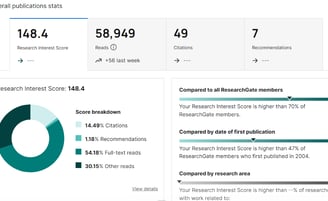Research and Publications
Journal articles indexed in databases such as EBSCO, Econlit, or Proquest with Editors like Inderscience and Journals such as the International Journal of Competitiveness, among others. GM provides readers also with books available on Amazon




Books Published Available at Amazon
Access my books in Amazon here
Research Papers Published
From Inderscience to the International Journal of Competitiveness. Enter the Orcid database to access my Journal Articles Published. Link here
RG Stats






